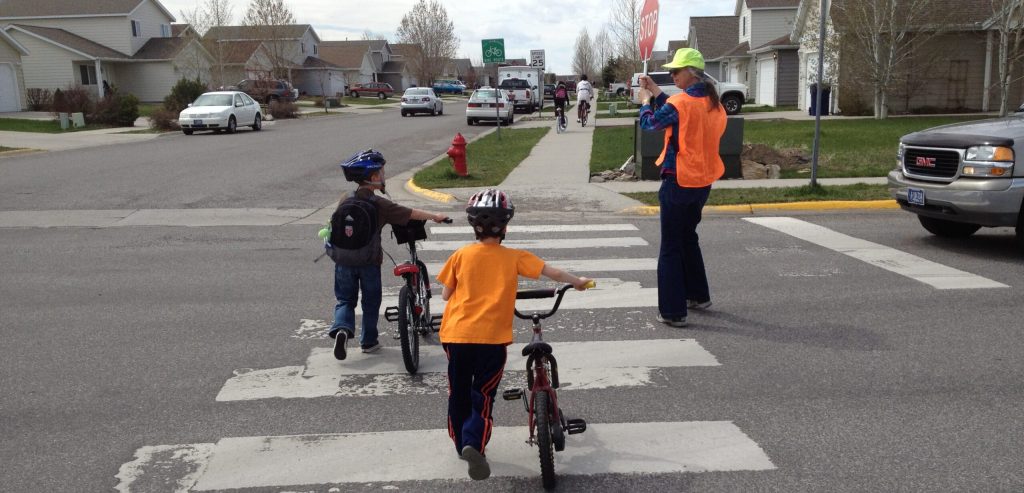Active Commuting Options Abound for Bozeman’s Elementary Schoolers

An ongoing collaboration between WTI, the City of Bozeman, and three Bozeman elementary schools is ensuring children develop valuable bike and walking skillsets, while also enjoying the outdoors with friends. As of last April, students from Hyalite and Meadowlark Elementary Schools have been meeting their classmates at a local park to collectively walk or bike […]
Montana LTAP Hits the Ground Running

Montana LTAP has been hitting the roads hard this summer. Director Matt Ulberg and Field Trainer Shawna Page have conducted a variety of trainings in Lewistown, Miles City, Bozeman, Sidney, Billings, Boulder, Kalispell, and Cutbank to name a few. They’ve also hosted classes at four Montana colleges, on the Rocky Boy, North Cheyenne, Crow, and […]
New Publication: Safe Interactions Between Vehicles and Bicyclists

The Journal of Safety Research has published an article that examines the influence of traffic safety culture on a driver’s behavior when interacting with bicyclists on the roadway. “Traffic safety culture and prosocial driver behavior for safer vehicle-bicyclist interactions” is based on a research collaboration between the Center for Health and Safety Culture (CHSC) and […]
Newspaper Lauds Parenting Website
ParentingMontana.org continues to receive great reviews. In a recent editorial, Karen Sullivan of the Montana Standard called the website “one of the best resources on parenting I’ve run across, and Montana parents are lucky to have it.” ParentingMontana.org features practical tools for parents with kids ranging from age five to age nineteen, covering challenging topics […]
CHSC Announces Summer Webinars
The Center for Health and Safety Culture will host webinars in July and August, based on two of their research and community outreach projects: Exploring Law Enforcement Attitudes and Beliefs About Traffic Safety Enforcement July 8, 2019 from 1–2pm MDT This webinar will summarize the results of a recent project to better understand how the […]
Where in the World is WTI? CHSC researchers collaborate at international conference
Center for Health and Safety Culture researchers Annmarie McMahill and Jay Otto attended the World Appreciative Inquiry Conference at the end of March in Nice, France. The theme of the conference focused on “Generating constructive conversations for the common good.” Participants had the opportunity to collaborate with colleagues from around the world to share their […]
2019 Positive Culture Framework Training Program – Registration Now Open
This fall, the Center for Health and Safety Culture (CHSC) will host a training workshop on the fundamentals of Positive Culture Framework. Registration is now open for the 2 ½ day event, which will be held September 24-26 in Nashville, Tennessee. The training is designed for anyone working to improve health and safety, such as […]
MSU News Promotes Parenting Montana Website
More great coverage for the new ParentingMontana.org website! In case you missed our recent article, MSU News has published an in-depth feature story on the toolkit of resources developed by the Center for Health and Safety Culture. Read more here.
New Publication: The role of social capital in traffic safety citizenship
Traffic safety citizenship is an emerging approach to reduce serious injuries and fatalities on our roadways. The International Journal of Interdisciplinary Civic and Political Studies recently published “The Role of Social Capital in Traffic Safety Citizenship” by Kari Finley, Jay Otto, and Nic Ward of the Center for Health and Safety Culture. The journal article […]
Dr. Nic Ward Featured in The Spokesman – Review
The Spokesman – Review of Spokane, Washington interviewed Center Director, Dr. Nic Ward, about a recent survey done by the Washington Traffic Safety Commission and the Center for Health and Safety Culture. The survey found that nine percent of Washington residents say they have driven after drinking and using cannabis. Read the story and see […]
